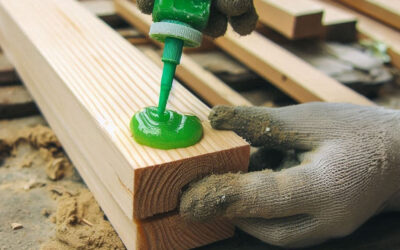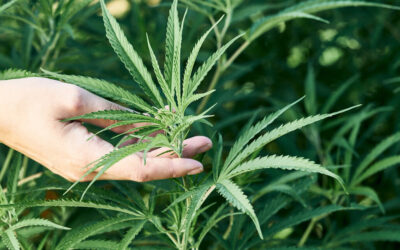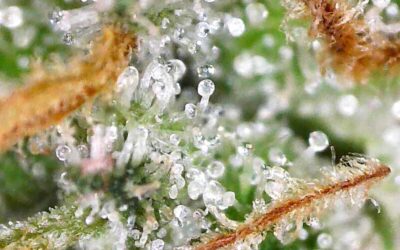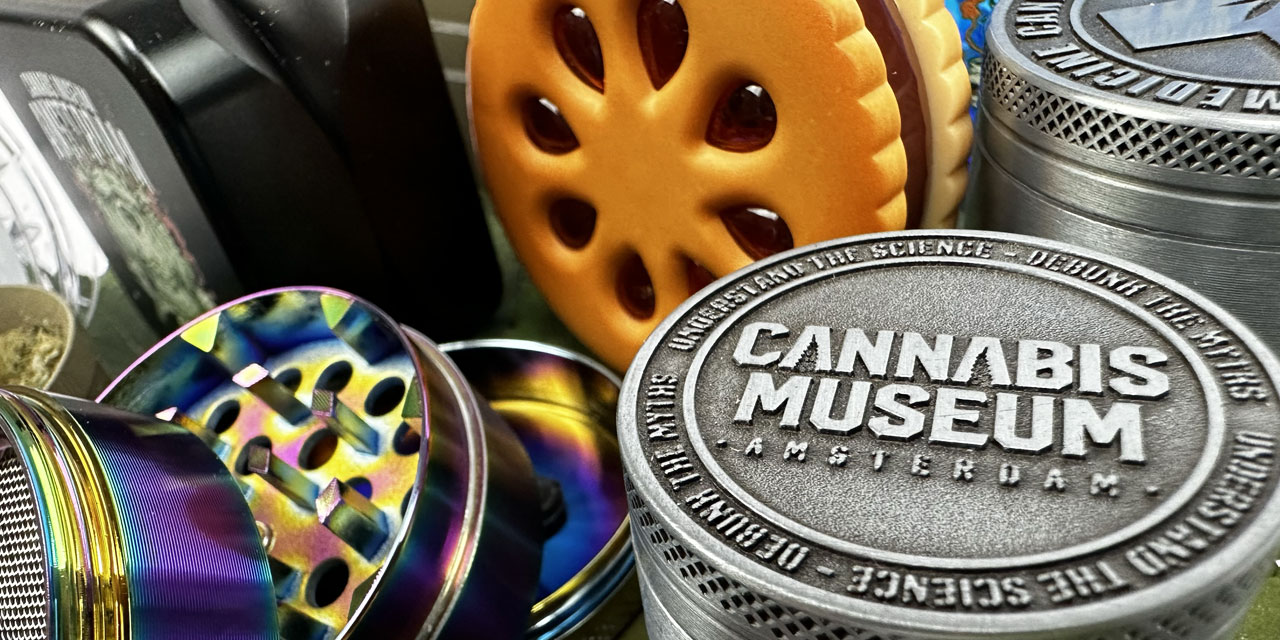
Cannabis Grinders
A cannabis grinder is a device used to break down cannabis buds into smaller, more manageable pieces for easier consumption for smoking, vaping, or cooking. They come in various shapes and sizes, typically featuring a cylindrical design with two or more interlocking pieces. Inside these pieces are teeth or pegs that grind the plant material when the parts are twisted in opposite directions. The evolution of the cannabis grinder is closely tied to the history of cannabis use and the development of consumption methods.
History and Development
Early Tools and Methods
Traditional Techniques: Before the invention of modern grinders, cannabis was typically broken down by hand or using rudimentary tools like scissors or mortars and pestles. These methods were labour-intensive and often resulted in unevenly ground material.
Indigenous Practices: In regions where cannabis has been used for centuries, such as India and the Middle East, traditional methods like stone grinders or simple hand-rolling techniques were used to prepare cannabis for consumption.
19th and Early 20th Centuries
Mortar and Pestle: This ancient tool, used for grinding various substances, was also applied to cannabis. Its use in cannabis preparation dates back centuries, though it wasn’t specifically designed for cannabis.
Grinders for Tobacco: The advent of mechanical grinders in the 1800s, primarily for tobacco, set the stage for similar tools to be adapted for cannabis use. These early grinders were simple devices with blades to cut the material into finer pieces.
Development of Modern Cannabis Grinders
1960s and 1970s
Rise of Cannabis Culture: With the increasing popularity of cannabis in the 1960s, especially in the counterculture movements, the need for more efficient ways to process cannabis led to the development of the first commercial cannabis grinders.
Metal and Plastic Grinders: The first commercial cannabis grinders were often adapted from spice or herb grinders, made from metal or plastic. These early models were rudimentary but effective.
1980s and 1990s
Specialised Cannabis Grinders: As cannabis use became more widespread and socially accepted, manufacturers began producing grinders specifically designed for cannabis. These grinders featured teeth or pegs to efficiently break down buds.
Introduction of Multi-Chamber Grinders: During this period, the multi-chamber grinder became popular. These grinders typically had three compartments: one for the cannabis, one for ground material, and a bottom chamber for collecting kief (the resinous trichomes).
2000s to Present
Advancements in Design: Modern cannabis grinders come in various materials, including aluminium, titanium, and even wood. They have also evolved in design, featuring magnetic lids, precision-cut teeth, and pollen screens.
Electric Grinders: The introduction of electric grinders has further revolutionised cannabis preparation. These devices offer quick and consistent grinding with minimal effort, appealing to both recreational and medical users.
Innovative Features: Some contemporary grinders include unique features like ergonomic grips, non-stick coatings, LED lights, or the ability to adjust grind consistency.
Types of Cannabis Grinders
Manual Grinders
Two-Piece Grinders: Simple and compact, these grinders consist of two parts: a top and bottom piece that sandwich the cannabis. The buds are ground as the two pieces are rotated in opposite directions.
Three-Piece Grinders: In addition to the two grinding sections, these grinders have a third compartment to catch the ground cannabis.
Four-Piece Grinders: These grinders have an additional chamber to collect kief, making them popular among users who want to save the potent trichomes for later use.
Electric Grinders
Battery-Powered: These grinders use a small motor to automate the grinding process, making them convenient for users who prefer less manual effort.
Rechargeable Models: More advanced electric grinders are rechargeable and often feature multiple speed settings and customisable grinding times.
Key Features of Cannabis Grinders
Teeth Design: The teeth or pegs inside a grinder are crucial for efficient grinding. Different designs, such as diamond-shaped or shark teeth, offer varying levels of efficiency and consistency.
Grinders are made from various materials, each with its own benefits:
Metal: Durable and resistant to wear, metal grinders are popular for their longevity and effective grinding.
Plastic: Lightweight and often more affordable, but less durable than metal.
Wood: Offers a natural aesthetic and can provide a unique grinding experience, although it may not be as durable or effective as metal or plastic.
Pollen Catchers: Many grinders feature a screen to separate the kief, which can be collected and used for making hash or adding an extra kick to joints and bowls.
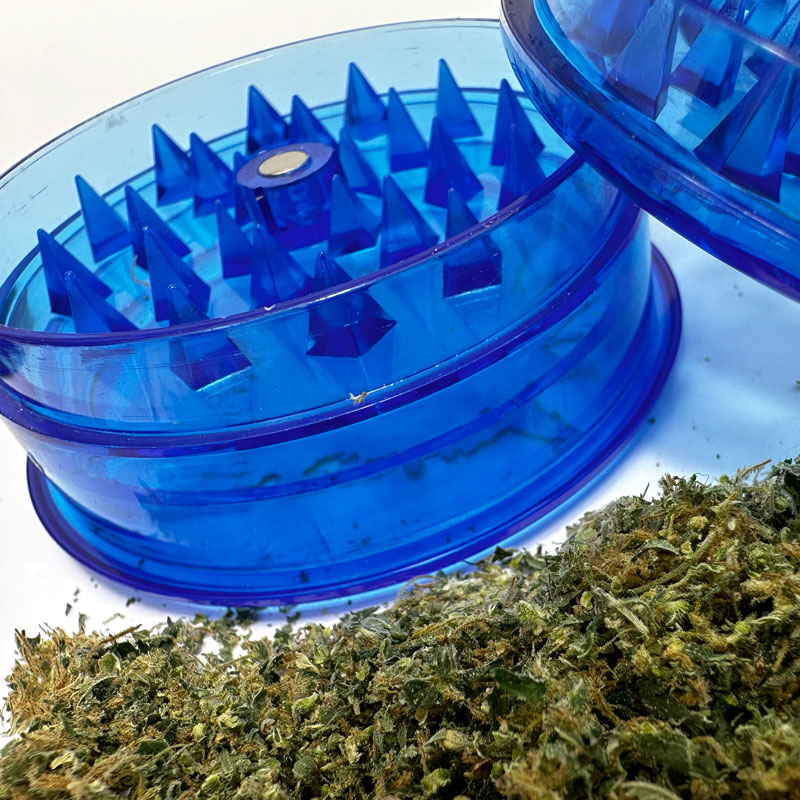
Contemporary Uses and Popularity
Legalisation and Medical Use: The increasing legalisation of cannabis worldwide has boosted the popularity and variety of grinders available on the market. Both recreational and medical users appreciate the convenience and efficiency grinders offer.
Diverse Applications: Modern grinders cater to various needs, from quick and easy preparation for personal use to precise grinding for medical patients who need to dose accurately.
Cultural Impact
Cannabis Paraphernalia: Grinders have become a staple in cannabis paraphernalia, with various designs and brands reflecting the diverse and evolving culture surrounding cannabis use.
Symbol of Cannabis Culture: Over time, the cannabis grinder has become not just a tool but also a symbol of the broader cannabis culture, representing the community’s innovation and appreciation for the plant.
Cannabis grinders have evolved significantly from simple hand tools to sophisticated devices designed to meet the needs of modern cannabis users. Their development mirrors the history of cannabis itself, reflecting changes in legality, social acceptance, and consumption methods. Today, cannabis grinders are an essential part of the cannabis experience, offering convenience, efficiency, and a connection to the rich cultural history of cannabis use.















